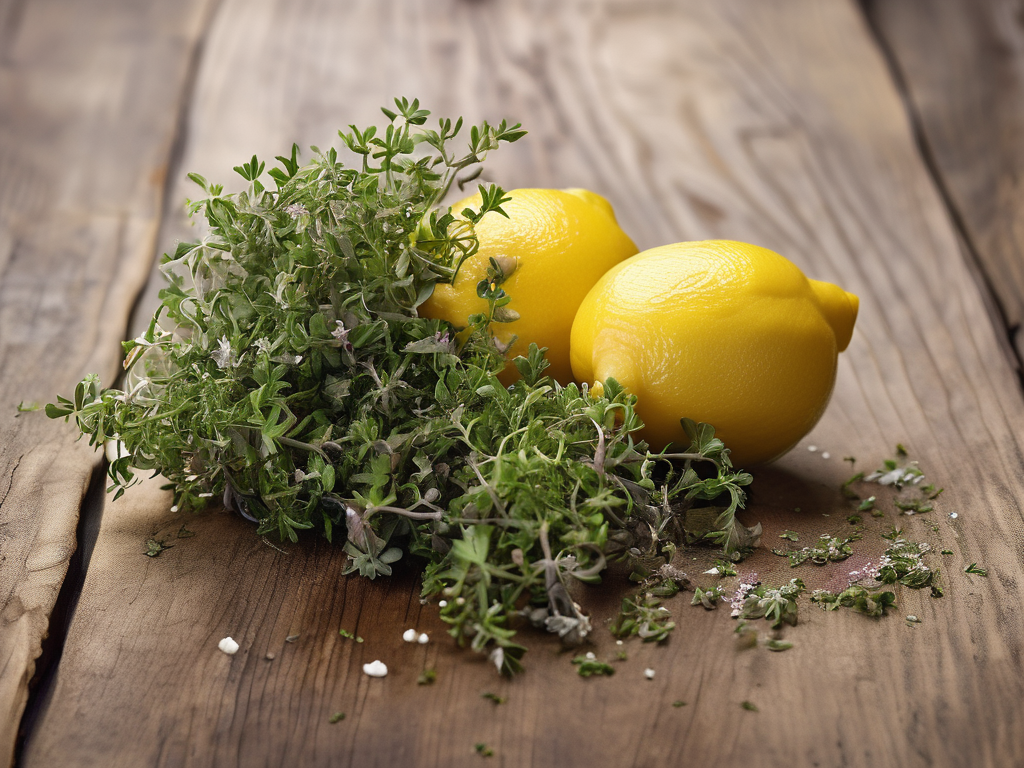
Signs that Lemon Thyme Has Gone Bad and Should Be Thrown Away
Get Your Free Food Safety Cheat Sheet
30 most common foods with instant answers. Print it and stick it on your fridge—completely free!
Signs that Lemon Thyme Has Gone Bad and Should Be Thrown Away
Lemon thyme is a popular herb known for its citrusy flavor and aromatic qualities. Whether you grow it in your garden or purchase it from the store, it's important to know the signs that lemon thyme has gone bad and should be discarded. In this blog post, we will explore the various indicators that your lemon thyme may have spoiled and provide you with practical tips on how to properly store this herb to extend its shelf life. (Lemon thyme)
How to Identify Spoiled Lemon Thyme
Visual Signs
- Discoloration: Check for any dark spots, mold, or discoloration on the leaves. Spoiled lemon thyme may appear wilted or have blackened areas.
- Slimy Texture: When touching the leaves, if you notice a slimy or mushy texture, it's a clear indication that the herb is no longer fresh.
- Unpleasant Odor: Fresh lemon thyme has a fragrant citrus scent. If you detect any foul or musty smell, it's a sign of spoilage.
Taste and Aroma
- Loss of Flavor: Spoiled lemon thyme may have a bland or off taste, lacking the characteristic citrus notes.
- Off Aroma: If the herb emits a pungent or unpleasant odor when crushed, it's best to discard it.
Mold Growth
- White Spots: Mold growth, indicated by white fuzzy spots on the leaves, is a clear sign that the lemon thyme has spoiled.
- Black Spots: Black or dark mold spots are also a sign of mold growth and spoilage.
Proper Storage of Lemon Thyme
To prolong the freshness of your lemon thyme and prevent spoilage, follow these storage tips:
- Refrigeration: Store fresh lemon thyme in the refrigerator. Place the stems in a glass of water, cover the leaves with a plastic bag, and secure it with a rubber band. Change the water every few days to maintain freshness.
- Freezing: Lemon thyme can be frozen for longer storage. Wash and dry the leaves, then chop or freeze them whole in an airtight container or freezer bag.
- Drying: Dry lemon thyme by hanging small bunches upside down in a well-ventilated area. Once dry, remove the leaves from the stems and store them in an airtight container away from light and heat.
Benefits of Using Fresh Lemon Thyme
- Enhanced Flavor: Fresh lemon thyme adds a burst of citrusy flavor to dishes, enhancing their taste.
- Nutritional Value: Lemon thyme is rich in vitamins and antioxidants, providing health benefits when consumed fresh.
- Aesthetic Appeal: The vibrant green color and aromatic fragrance of fresh lemon thyme can elevate the presentation of your culinary creations.
Conclusion
In conclusion, it's essential to be able to recognize the signs that lemon thyme has gone bad to ensure the safety and quality of your dishes. By following proper storage methods and keeping an eye out for visual, olfactory, and taste indicators of spoilage, you can enjoy the benefits of fresh lemon thyme in your cooking. Remember to store your herbs correctly to maximize their shelf life and savor their delightful flavors in your favorite recipes.
For more information on lemon thyme and other herbs, visit our [lemon thyme](/food/lemon thyme) page.
Stay safe and enjoy cooking with fresh herbs! (Lemon thyme)
Authoritative Food Safety References
These agencies and university labs inform every tip and health precaution we publish.
USDA FoodKeeper – Cold Storage Guidelines
Official refrigerator, freezer, and pantry timelines maintained by the U.S. Department of Agriculture.
Visit USDA FoodKeeperFDA Produce Safety Rule & Grower Guidance
Field-to-fridge handling practices that prevent contamination of fruits, vegetables, and leafy greens.
Visit FDA Produce SafetyCDC Foodborne Illness Prevention Hub
Surveillance-backed guidance on pathogens, symptoms, and steps to reduce foodborne illness risk.
Visit CDC Food SafetyUC Davis Postharvest Technology Center
University research detailing optimal storage atmospheres for produce after harvest.
Visit UC Davis PostharvestPenn State Extension – Home Food Preservation & Safety
Peer-reviewed extension bulletins on safe canning, chilling, and reheating practices.
Visit Penn State ExtensionGet Your Free Food Safety Cheat Sheet
30 most common foods with instant answers. Print it and stick it on your fridge—completely free! Want more? Upgrade to the complete guide with 70+ foods.
Scan your food directly and get instant safety info using our AI-powered camera feature.